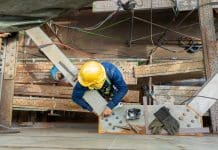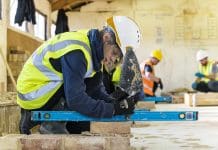PBC Today spoke with Regan Costello, Pre-Construction Manager for Retrofit and Decarbonisation at Seddon, about creating affordable and sustainable homes with Passivhaus
In this interview, Pre-Construction Manager for Retrofit and Decarbonisation at Seddon Regan Costello discusses how Seddon is responding to the affordable housing crisis whilst delivering sustainable solutions.
Tell us a little bit about yourself, and your role at Seddon
I’m the Pre-Construction Manager for Retrofit and Decarbonisation at Seddon, one of the leading contractors in the North West with a group turnover of circa £200m, employing over 600 colleagues. Growing up in Generation Z, I’ve always been passionate about addressing climate change and creating social impact.
I believe we should all do our bit to tackle climate change and do our upmost to help those in need, never more so than now with the cost-of-living crisis and energy insecurity. Having worked at Seddon for over five years now, it excites me that it’s a company that shares similar values around decarbonisation and putting people first in that journey when it comes to tackling some of society’s major issues.
How is Seddon addressing the affordable housing crisis, in both this project and beyond?
The housing crisis has been mounting for decades, with housing demand increasing and regulations becoming increasingly challenging, restricting the supply of new homes. For example, Salford City Council currently has approximately 6,000 households on its waiting list for new housing.
We partnered with Salford City Council to construct 13 homes on Brassington Avenue as part of a larger partnership to deliver 392 new build Passivhaus homes across Salford. There is no doubt this will provide high quality, energy-efficient housing for the people of Salford, but the scale of the affordable housing crisis means we must continue to drive innovative partnerships and projects like this one.
Overall, across the Northwest and Midlands we will deliver 400 new build homes a year. Of which, over 50% are affordable homes. In addition to creating new build affordable homes, another challenge in affordable housing is the condition and energy efficiency of existing stock. Decarbonising stock to lower its carbon footprint and reduce energy bills for residents is going to be a major challenge over the next decade. At Seddon, we are exploring partnerships with several affordable housing providers to tackle these challenges through the design and installation of decent homes style refurbishments, fabric improvements and renewable energy solutions.
Tell us about how Brassington Avenue adopted Passivhaus design standards. How does this help to address the energy crisis that the area is currently facing?
According to the Department for Business, Energy & Industrial Strategy, in Salford, 15.3% of households are ‘fuel poor’. The Passivhaus design on Brassington Avenue has allowed us to provide highly energy efficient homes, helping to tackle fuel poverty, cost of living and the energy crisis for the residents.
The Passivhaus standard adopts a whole-building approach to design and construction. It places a considerable amount of importance on the building’s fabric to provide a high-quality and energy efficient home. This includes some challenging build parameters, such as an air tightness value of 0.6m3/h, compared to the standard 5.0m3/h for Part L 2013 compliance.
For the homes on Brassington Avenue, we used a fabric first approach to remove the need for a traditional heating system, instead using just a single panel heater in the lounge. In conjunction with a Mechanical Ventilation with Heat Recovery (MVHR) system, the homes are able to recycle and recover heat in the property to maintain the thermal comfort and reduce the energy requirement for heating.
Did the team run into any challenges during construction? How was this overcome, and what was the biggest takeaway?
The learning curves began in design where we used the Passive House Planning Package (PHPP). This created a different approach to design where the PHPP used data to specify products and create underlying design parameters for the architect to draw from.
During construction, a big challenge was the behaviours of operatives on site. The stringent standards and high-quality required for Passivhaus certification meant the team’s approach to building had to be spot on! For example, behaviours around protecting materials to avoid damage and ensure the whole house system works were a key KPI for our Site Managers. Re-affirming the correct behaviours through toolbox talks and training with our own labour force and the supply chain meant we could set our, and the required, expectations for working on a Passivhaus project.
In the same vein, the quality control required to achieve Passivhaus standard meant that we had to tighten up even further on our outputs. Detail and quality had to be managed collaboratively across the supply chain and with key stakeholders. The use of a Passivhaus assessor put a heightened importance of record keeping and photography of the work carried out on site. Having all of this in place meant that we could better control quality, at the same time as satisfying the assessor that we had built to standard.
A big challenge to the success of any Passivhaus project is how the end user maximises the technology of the home for its designed purpose. It’s normal to open windows when the sun is shining into your property, but Passivhaus builds are carefully designed to use a MVHR to prevent overheating. This means that when a window is open, the MVHR drops and costs increase. To tackle this, we’ve spent a large amount of time supporting and educating the residents at Brassington with simple quick start guides, interactive guides and detailed demonstrations.
How will Seddon take the challenges faced during construction and use lessons learned on future housing projects?
The Brassington project allows us to take forward the lessons learnt to refine and perfect our approach to Passivhaus on the further five Passivhaus projects we are currently working on with Salford City Council with a view to bringing our expertise to others in the housing sector.
Mastering a new system as stringent as Passivhaus will undoubtably help us and the sector, as the drive towards Net Zero continues, and new building techniques like Passivhaus become more common. Collaboration with stakeholders and supply chain will become even more important because of this, and the relationships that have established will put us in good stead for future projects.
Brassington Avenue is one of six Passivhaus sites across Salford. Can you tell us a little bit about future plans for the remaining sites?
The 13 homes on Brassington Avenue are part of a wider partnership with Salford City Council to build 392 new build Passivhaus homes across the Salford area. We have completed a further 90 Passivhaus homes at Ryall Avenue and Clifton Green since finishing Brassington Avenue.
Three other projects, Blandford Road, Kerrera Drive and Longshaw Drive, are all underway. The latter represents the Council’s largest social housing project for 50 years with 177 homes. The collection of these properties will have a highly positive impact for the residents in Salford and go a long way to tackling the affordable housing crisis, energy crisis and fuel poverty.

















